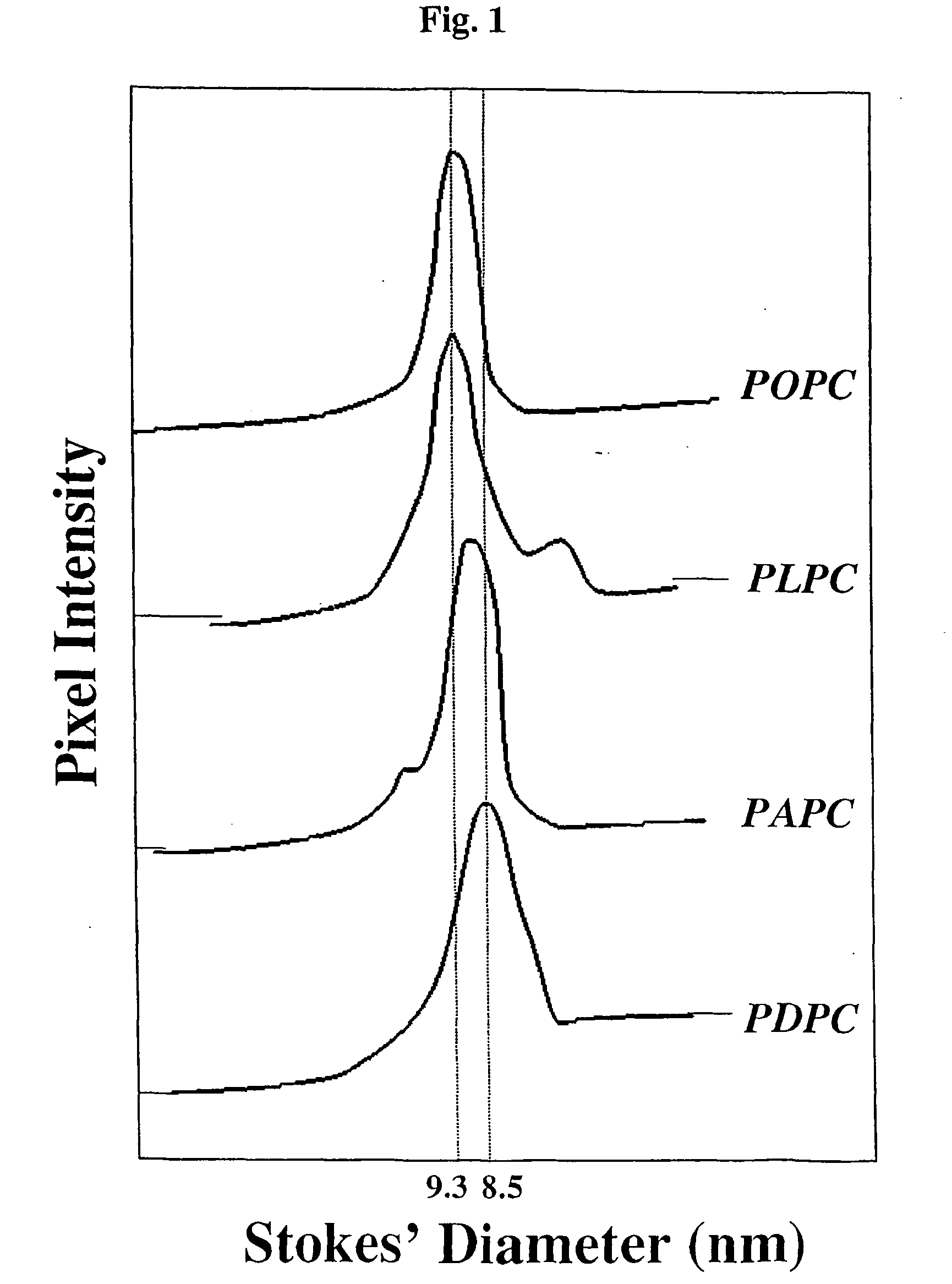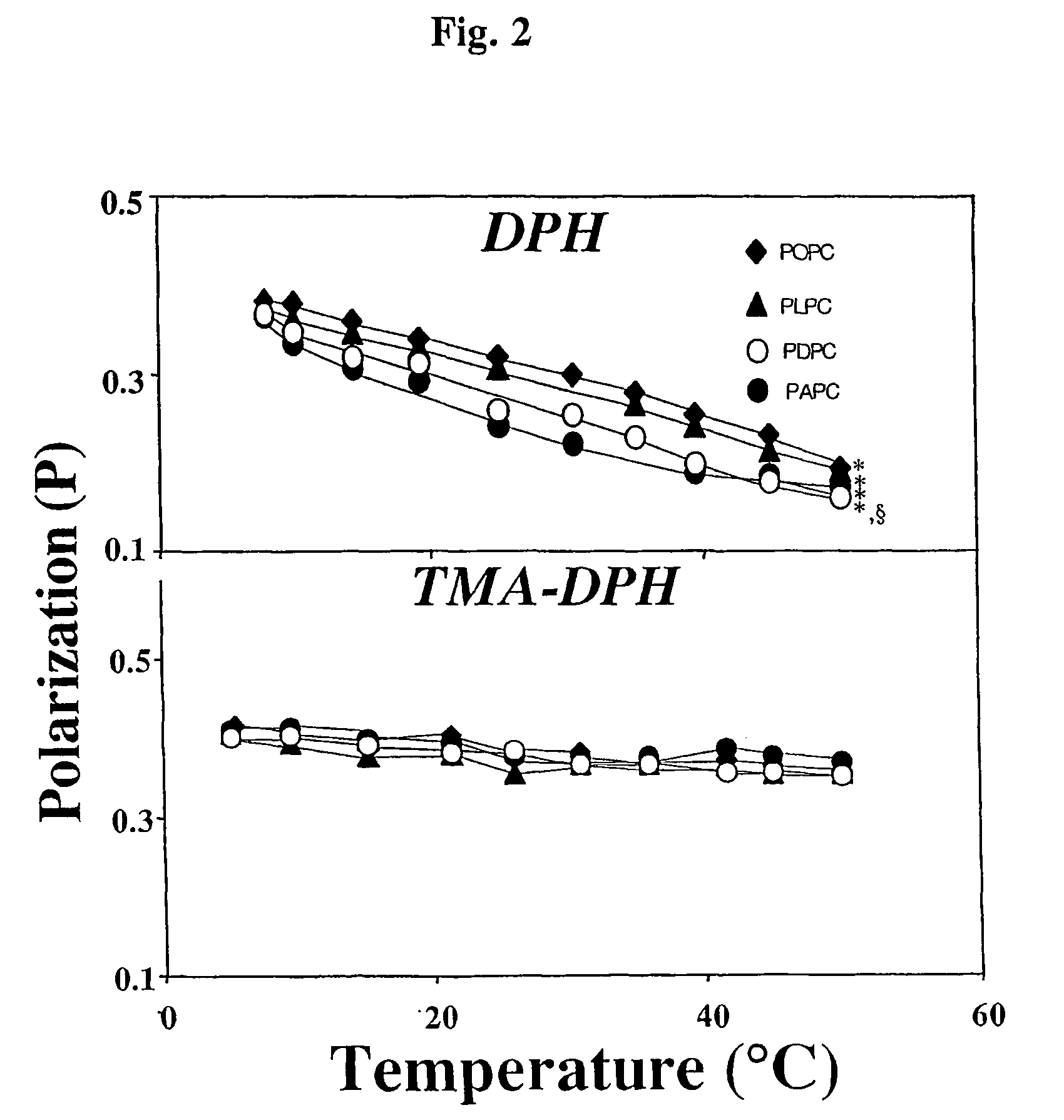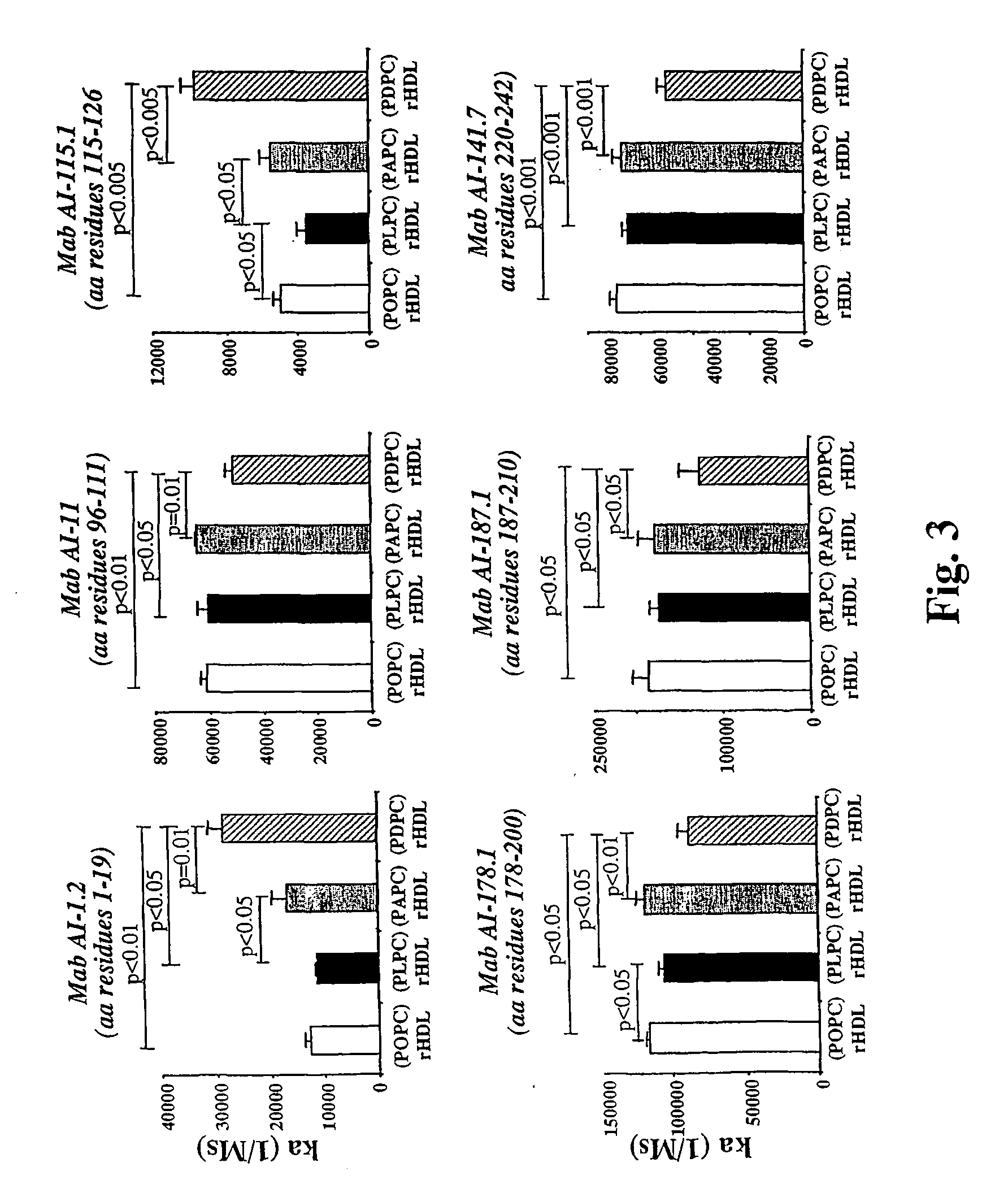Spheroidal hdl particles with a defined phospholipid composition
a phospholipid composition and particle technology, applied in the field of spheroidal hdl particles with a defined phospholipid composition, can solve the problems of cholesterol being difficult to supply in an aqueous form, not a good model, and discoid rhdl like particles do not mimi
- Summary
- Abstract
- Description
- Claims
- Application Information
AI Technical Summary
Benefits of technology
Problems solved by technology
Method used
Image
Examples
Embodiment Construction
[0078] Four types of spherical rHDL were used for this study. The rHDL contained either POPC, PLPC, PAPC or PDPC as the sole phospholipid constituent. The rHDL preparations all contained cholesteryl esters (CE) as their only core lipid and apoA-I as the only apoliprotein. The preparations were all similar in size and had comparable lipid / protein ratios. In other words, the only difference of note between the four rHDL preparations was the length and unsaturation of their phosphatidylcholine sn-2 acyl chains.
[0079] Experimental Procedures
[0080] Preparation of Lipid-Free ApoA-I
[0081] HDL were isolated from autologously donated samples of pooled human plasma (Gribbles Pathology, Adelaide, South Australia) by ultracentrifugation in the 1.07<d<1.21 g / mL density range (7). The isolated HDL were delipidated by standard techniques (8) and the resulting apoHDL was subjected to anion exchange chromatography on a Q-Sepharose Fast Flow column (Pharmacia, Uppsala, Sweden) attached to an FPLC sys...
PUM
| Property | Measurement | Unit |
|---|---|---|
| Composition | aaaaa | aaaaa |
| Polarity | aaaaa | aaaaa |
| Ratio | aaaaa | aaaaa |
Abstract
Description
Claims
Application Information
 Login to View More
Login to View More - R&D
- Intellectual Property
- Life Sciences
- Materials
- Tech Scout
- Unparalleled Data Quality
- Higher Quality Content
- 60% Fewer Hallucinations
Browse by: Latest US Patents, China's latest patents, Technical Efficacy Thesaurus, Application Domain, Technology Topic, Popular Technical Reports.
© 2025 PatSnap. All rights reserved.Legal|Privacy policy|Modern Slavery Act Transparency Statement|Sitemap|About US| Contact US: help@patsnap.com



